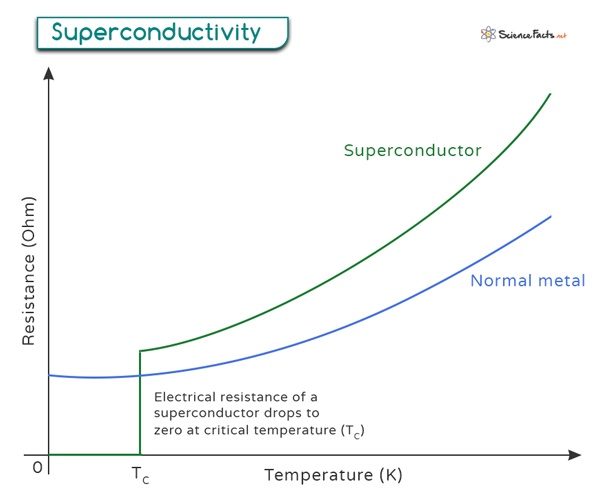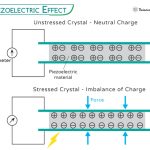Superconductivity
Superconductivity is a phenomenon observed in certain materials called superconductors. When these materials are cooled to very low temperatures, they exhibit two remarkable properties: zero electrical resistance and the expulsion of magnetic fields (Meissner effect). These properties allow superconductors to conduct electricity without energy loss, making them highly efficient.
The discovery of superconductivity in 1911 by Dutch physicist Heike Kamerlingh Onnes was a groundbreaking development in condensed matter physics.
Characteristics of Superconductors
Critical Temperature (TC)
In the context of superconductivity, the critical temperature (TC) is the temperature below which a material becomes superconducting. At this temperature, the material’s electrical resistance drops to zero, and it begins to exhibit superconductivity. Each superconductor has its own specific critical temperature. For example, traditional superconductors like mercury have a TC of around 4.2 K, while some high-temperature superconductors, such as certain cuprate and iron-based compounds, can have TC values above 100 K.
Critical Magnetic Field (HC)
Superconductors can expel magnetic fields up to a certain strength. The critical magnetic field is the maximum magnetic field strength that a superconductor can withstand while maintaining its superconducting state. If the external magnetic field exceeds this critical value, the material will revert to a normal state with non-zero electrical resistance.
Based on their properties, superconductors are classified into Type I and Type II superconductor.
Understanding Superconductivity
We will delve into the two most important theories of superconductivity to help us understand how certain materials can conduct electricity without resistance.
1. BCS (Bardeen-Cooper-Schrieffer) Theory
In 1957, three scientists named John Bardeen, Leon Cooper, and Robert Schrieffer explained why some materials become superconductors. They said that at very low temperatures, electrons in the material can form pairs. These pairs of electrons, called Cooper pairs, move together through the material without getting stopped, which means there is no electrical resistance. The electrons pair up because they interact with tiny vibrations in the material’s structure.
2. Ginzburg-Landau Theory
In 1950, scientists Vitaly Ginzburg and Lev Landau created a theory to explain how materials become superconductors. They used a special mathematical idea called the order parameter to describe what happens inside the material. This theory helps us understand how superconductors behave when they are close to their critical temperature. It also tells us that the change to becoming a superconductor happens smoothly.
Applications of Superconductivity
- Magnetic Resonance Imaging (MRI): Superconducting magnets, which are magnets made from superconducting materials capable of generating extremely powerful and stable magnetic fields, are the backbone of MRI technology. They allow doctors to capture detailed images of the human body without ionizing radiation.
- Magnetic Levitation (Maglev) Trains: High-speed maglev trains utilize superconducting magnets to levitate the train cars above the track, enabling frictionless, energy-efficient transportation at speeds exceeding 600 km/h. This technology is already in use in several countries, showcasing the practical benefits of superconductivity.
- Particle Accelerators: In particle accelerators like the Large Hadron Collider (LHC), superconducting magnets guide and focus particle beams over long distances.
- Superconducting Quantum Computing: Superconductors also play a crucial role in developing quantum computers. The ability of superconducting materials to carry electricity without resistance makes them ideal for the delicate quantum circuits required in these next-generation computing devices. These devices have revolutionized fields like cryptography, materials science, and drug discovery.
-
References
Article was last reviewed on Tuesday, July 30, 2024






